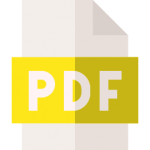Students During Pandemic. Time Spent Studying and Courses
Rejla Bozdo – University of Tirana, Albania
7th International Scientific ERAZ Conference – ERAZ 2021 – Conference Proceedings: KNOWLEDGE BASED SUSTAINABLE DEVELOPMENT, Online/virtual, May 27, 2021
ERAZ Conference Proceedings are published by: Association of Economists and Managers of the Balkans – Belgrade, Serbia
ERAZ conference partners: Faculty of Economics and Business, Mediterranean University, Montenegro; University of National and World Economy – Sofia, Bulgaria; Faculty of Commercial and Business Studies – Celje, Slovenia; AMBIS University, Prague – Czech Republic; Faculty of Applied Management, Economics and Finance – Belgrade, Serbia
ERAZ Conference 2021 Conference Proceedings: ISBN 978-86-80194-46-2, ISSN 2683-5568, DOI: https://doi.org/10.31410/ERAZ.2021
Keywords:
Covid-19;
Students;
Education
Abstract: A great percentage of 94% of students were out of school worldwide during the peak of school closings, in April 2020, according to the World Bank. The pandemic year of Covid-19 posed education all over the world in a context of huge uncertainty. Students and schools had to navigate through options of either hybrid, remote learning, or no schooling at all. For the families, 2020 was a year with great stress and panic. Lockdowns changed people’s lifestyles, so they moved to a new set of habits and consumer behavior.
This research aims to investigate students’ behavior during 2020 regarding the variables: level of professional knowledge gained during 2020, the need for courses other than the academic ones, how many courses were taken as a response to the need and the number of hours dedicated to studying compared to the amount of time spent before 2020.
An online survey was conducted among students of higher education institutions, in Albania, which shows that more than 47.2% of the respondents have spent fewer hours studying during 2020 compared to the time they used to study before the pandemic. Regarding other courses taken during this period, considering to add value to their professional career, more than 60% of respondents declared that they did not take any additional courses, even though when asked about the need to attend these courses they answered with a mean of 3.68 in a scale (1 to 5, where 1 is not at all and 5 is too much).

ERAZ Conference
Creative Commons Non Commercial CC BY-NC: This article is distributed under the terms of the Creative Commons Attribution-Non-Commercial 4.0 License (https://creativecommons.org/licenses/by-nc/4.0/) which permits non-commercial use, reproduction and distribution of the work without further permission.

References
Economy Policy Institute (2020) COVID-19 and students’ performance, equity and US education policy. Retrieved at: https://files.eric.ed.gov/fulltext/ED610971.pdf
Knibel, E. (2001). The Use and Effect of Distance Education in Healthcare: What Do We Know? Bethesda, MD: Published for the U.S. Agency for International Development (USAID) by the Quality Assurance Project. Operations Research Issue Paper, 2(2). Retrieved from https://www.semanticscholar.org/paper/The-Use-and-Effect-of-Distance-Education-in- %3A-WhatKnebel/cda9b3bd188a9541aed3e670ec8ba6a6f1516df7#citing-papers
Pokhrel S., Chhetri R., (2021), A literature review on impact of Covid-19 pandemic on teaching and learning. Retrieved at: https://journals.sagepub.com/doi/full/10.1177/2347631120983481
World Bank, (2021), Urgent, Effective Action Required to Quell the Impact of Covid-19 on Education Worldwide, https://www.worldbank.org/en/news/immersive-story/2021/01/22/ urgent-effective-action-required-to-quell-the-impact-of-covid-19-on-education-worldwide

